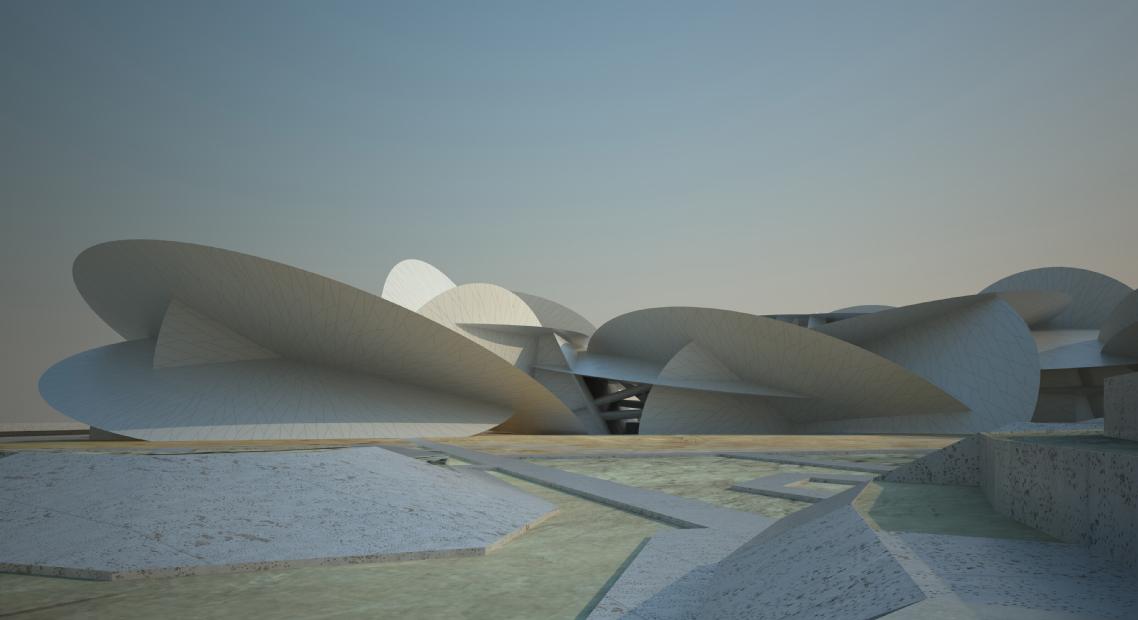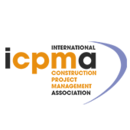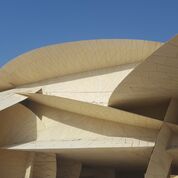National Museum of Qatar

|
|
National Museum of Qatar, Doha, Qatar Client: Qatar Museums Project Manager: ASTAD |
Contents |
Overview
The National Museum of Qatar is one of the Middle East’s most iconic landmarks. The design reflects the desert rose, commonly found beneath the sands of the Gulf region, and comprises an organically-propagating series of interlocking disks that surround the main structure, creating a ring of gallery spaces circling a central court. The interlocking disks that compose the building are representative of rose petals, each positioned at different angles. These disks are made of steel truss structures assembled in a hub-and-spoke arrangement, clad in glass fibre reinforced concrete panels.
Three aspects were critical during the inception and delivery of this building in order for it to fulfil the objectives set by the client:
- Design.
- Cutting-edge technology.
- Sustainability.
Design
Conceptually, the National Museum of Qatar follows an undulating loop that gently rises and falls, replicating the natural contours of the desert. At the end of the loop, visitors can explore Fariq Al Salatah Palace, a historic building which forms an integral part of the museum.
Large windows reveal glimpses of the caravanserai, the museum’s gardens and Doha Bay. Thirteen permanent galleries occupy the interior like nomad camps, telling the story of Qatar’s natural, cultural and political history from ancient times to the present. Columns concealed within the vertical disks carry the weight of the structure’s petals to the ground. Deep disk-shaped sun-breaker elements filter incoming sunlight and provide shade.
The building provides 8000m2 of permanent gallery space, 2000m2 of temporary gallery space, a 220-seat auditorium, a food forum and TV studio, two cafés, a restaurant and a museum shop. It is surrounded by a 115,000m2 park with an artificial lagoon and parking for 400 vehicles.
Technology
Building information modelling (BIM) played a major role in shaping the project management methodology, providing state-of-the-art solutions to ensure the smooth transition of the project through its life-cycle.
Importantly, BIM facilitated greater coherence for all stakeholders, and ultimately reduced the length of the development process. Due to the complex design of the museum, the major challenge was to be able to accurately visualise the design from all angles. BIM allowed this to happen. ASTAD also used its flagship technology SINAN to connect the client, project teams, contractors, suppliers, architects, consultants and all other relevant stakeholders, optimising the collaborative experience throughout.
Sustainability
The building is designed for USGBC LEED 2.2 Silver rating. It provides passive shading from the sun, reducing solar gain to both solid and glazed areas as well as providing comfort to people moving around the perimeter. Deep overhangs provide a target cut-off angle of 30º, based on an analysis of solar data for Doha. The facade panels are double glazed, low E, Aragon filled, to reduce air conditioning energy consumption.
Fresh air usage is adjusted to match occupancy rates using CO2 sensing, with air recirculated wherever possible and full recirculation when the galleries are unoccupied. The project is designed to achieve 21% energy savings, with indoor water consumption 26% lower than industry standards. Selecting native and adaptive landscape species has reduced landscape water consumption by 55% by using indigenous grasses and plants, such as pomegranate trees, date palms, herbs and the Sidra, the national tree of Qatar.
The National Museum of Qatar achieved an ICPMA IQ Distinction Award in 2018. For more information email [email protected].
--ICPMA 14:51, 23 Dec 2018 (BST)
Related articles on Designing Buildings Wiki
Featured articles and news
UKGBC launch the UK Climate Resilience Roadmap
First guidance of its kind on direct climate impacts for the built environment and how it can adapt.
CLC Health, Safety and Wellbeing Strategy 2025
Launched by the Minister for Industry to look at fatalities on site, improving mental health and other issues.
One of the most impressive Victorian architects. Book review.
Common Assessment Standard now with building safety
New CAS update now includes mandatory building safety questions.
RTPI leader to become new CIOB Chief Executive Officer
Dr Victoria Hills MRTPI, FICE to take over after Caroline Gumble’s departure.
Social and affordable housing, a long term plan for delivery
The “Delivering a Decade of Renewal for Social and Affordable Housing” strategy sets out future path.
A change to adoptive architecture
Effects of global weather warming on architectural detailing, material choice and human interaction.
The proposed publicly owned and backed subsidiary of Homes England, to facilitate new homes.
How big is the problem and what can we do to mitigate the effects?
Overheating guidance and tools for building designers
A number of cool guides to help with the heat.
The UK's Modern Industrial Strategy: A 10 year plan
Previous consultation criticism, current key elements and general support with some persisting reservations.
Building Safety Regulator reforms
New roles, new staff and a new fast track service pave the way for a single construction regulator.
Architectural Technologist CPDs and Communications
CIAT CPD… and how you can do it!
Cooling centres and cool spaces
Managing extreme heat in cities by directing the public to places for heat stress relief and water sources.
Winter gardens: A brief history and warm variations
Extending the season with glass in different forms and terms.
Restoring Great Yarmouth's Winter Gardens
Transforming one of the least sustainable constructions imaginable.
Construction Skills Mission Board launch sector drive
Newly formed government and industry collaboration set strategy for recruiting an additional 100,000 construction workers a year.
New Architects Code comes into effect in September 2025
ARB Architects Code of Conduct and Practice available with ongoing consultation regarding guidance.
Welsh Skills Body (Medr) launches ambitious plan
The new skills body brings together funding and regulation of tertiary education and research for the devolved nation.
Paul Gandy FCIOB announced as next CIOB President
Former Tilbury Douglas CEO takes helm.



























